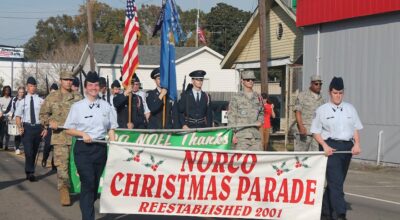History Matters
Published 8:00 am Sunday, September 18, 2022
|
Getting your Trinity Audio player ready...
|
Showing our children that their past is prelude to their future
by John Grimaldi and David Bruce Smith
September 16 to September 30
On September 17, 1976, America’s inaugural space shuttle, the Constitution, was scheduled for lift off, but then according to the National Air and Space Museum—it was “rebranded” the USS Enterprise after “President Ford reportedly received thousands of petition signatures from avid Star Trek fans across the country.”
Subsequently, regular exploration of the heavens did not resume until the USS Columbia took off in April of 1981 from Cape Canaveral, FL. Its two solid-rocket boosters put the capsule into orbit for a two-day shakedown mission, and a “glider-like” return to Edwards Air Force in California.
For more information, the Grateful American Book Prize recommends The History of the American Space Shuttle by Dennis R. Jenkins.
###
When the Revolutionary War started in 1775, the British navy was believed to be—unbeatable–until John Paul Jones, a bold, young, senior lieutenant in the newly established Continental Navy, “distinguished himself in actions against British ships in the Bahamas, the Atlantic Ocean and the English Channel,” according to History.com.
Then, on September 23, 1779, Commander Jones—while aboard his vessel, the Bonhomme Richard—sighted two British warships on the eastern coast of England: the HMS Serapis, and the HMS Countess of Scarborough:
“After inflicting considerable damage to the Bonhomme Richard, Richard Pearson, the captain of the Serapis, asked Jones [to strike] his colors, the naval signal indicating surrender. From his disabled ship, Jones replied, “I have not yet begun to fight.” After three more hours of frenetic fighting, the Serapis and the Countess of Scarborough surrendered.
The Grateful American Book Prize suggests Evan Thomas’ John Paul Jones: Sailor, Hero, Father of the American Navy.
###
During the Revolutionary War, the Continental Congress dispatched John Adams to France “as minister plenipotentiary in charge of negotiating treaties of peace and commerce with Great Britain,” according to History.com.
By late in 1782, “The tide of the war was turning in America’s favor” and Adams returned to Paris in October of that year along with John Jay and Benjamin Franklin. Their mission was to negotiate a peace treaty between the American colonies and Great Britain and to put an end to the rebellion. It took almost a year but eventually, in early September of 1783 both sides signed the Treaty of Paris ending the American Revolution and formally recognizing the United States as an independent nation.
Adams was a Founding Father, America’s first vice president under George Washington, and the country’s second president.
The Grateful American Book Prize recommends The Treaty of Paris: The Precursor to a New Nation by Edward J Renehan Jr.
###






